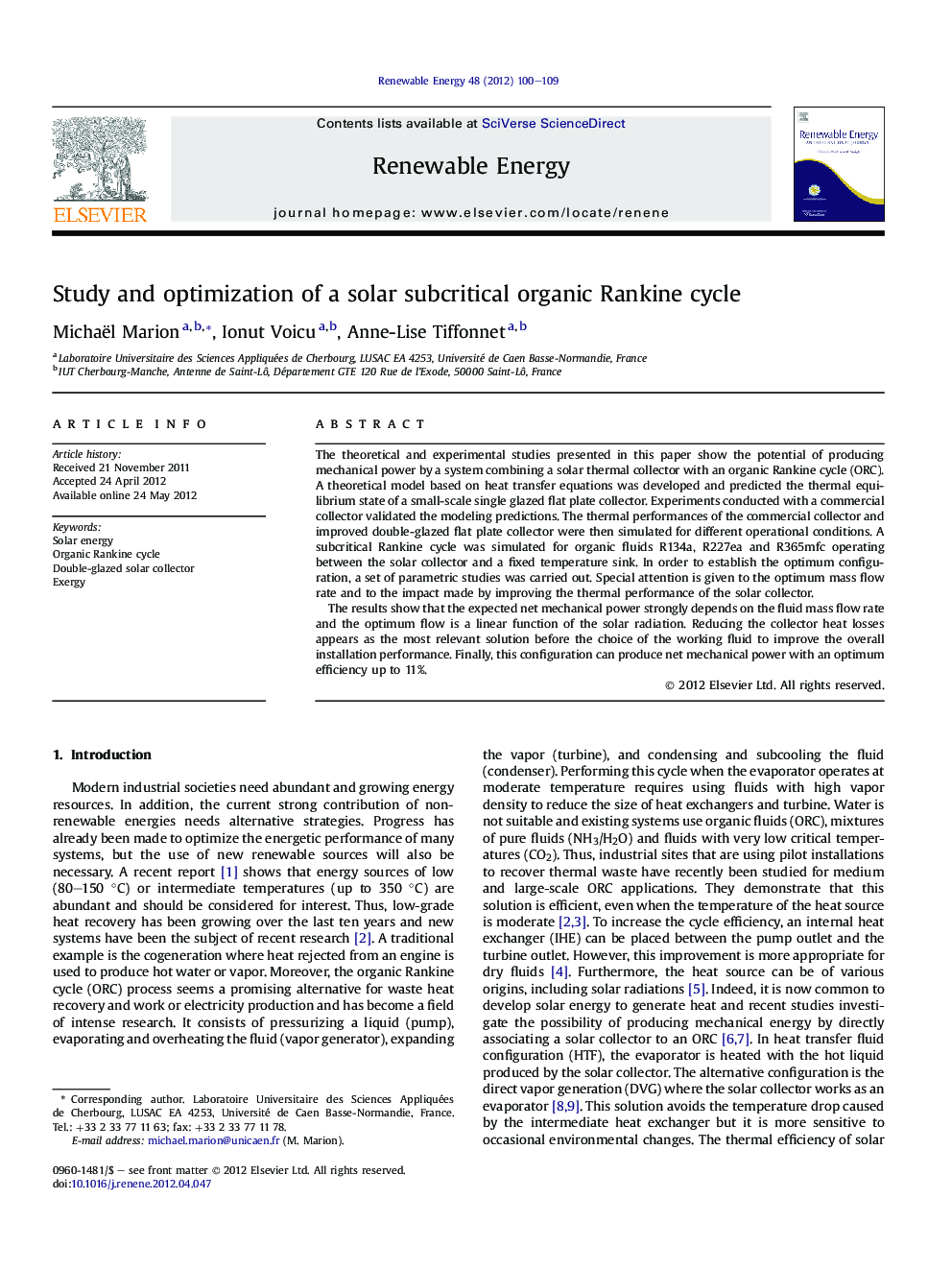| کد مقاله | کد نشریه | سال انتشار | مقاله انگلیسی | نسخه تمام متن |
|---|---|---|---|---|
| 300860 | 512491 | 2012 | 10 صفحه PDF | دانلود رایگان |

The theoretical and experimental studies presented in this paper show the potential of producing mechanical power by a system combining a solar thermal collector with an organic Rankine cycle (ORC). A theoretical model based on heat transfer equations was developed and predicted the thermal equilibrium state of a small-scale single glazed flat plate collector. Experiments conducted with a commercial collector validated the modeling predictions. The thermal performances of the commercial collector and improved double-glazed flat plate collector were then simulated for different operational conditions. A subcritical Rankine cycle was simulated for organic fluids R134a, R227ea and R365mfc operating between the solar collector and a fixed temperature sink. In order to establish the optimum configuration, a set of parametric studies was carried out. Special attention is given to the optimum mass flow rate and to the impact made by improving the thermal performance of the solar collector.The results show that the expected net mechanical power strongly depends on the fluid mass flow rate and the optimum flow is a linear function of the solar radiation. Reducing the collector heat losses appears as the most relevant solution before the choice of the working fluid to improve the overall installation performance. Finally, this configuration can produce net mechanical power with an optimum efficiency up to 11%.
► We model the thermal equilibrium of common and optimized solar collectors.
► We validate the model with experimental results from a commercial single glazed collector.
► We calculate the mechanical energy produced by the solar Rankine cycle using R134a, R227ea and R365mfc.
► We calculate the optimum fluid mass flow rate.
► We enhance the improvement made by reducing the collector heat losses.
Journal: Renewable Energy - Volume 48, December 2012, Pages 100–109